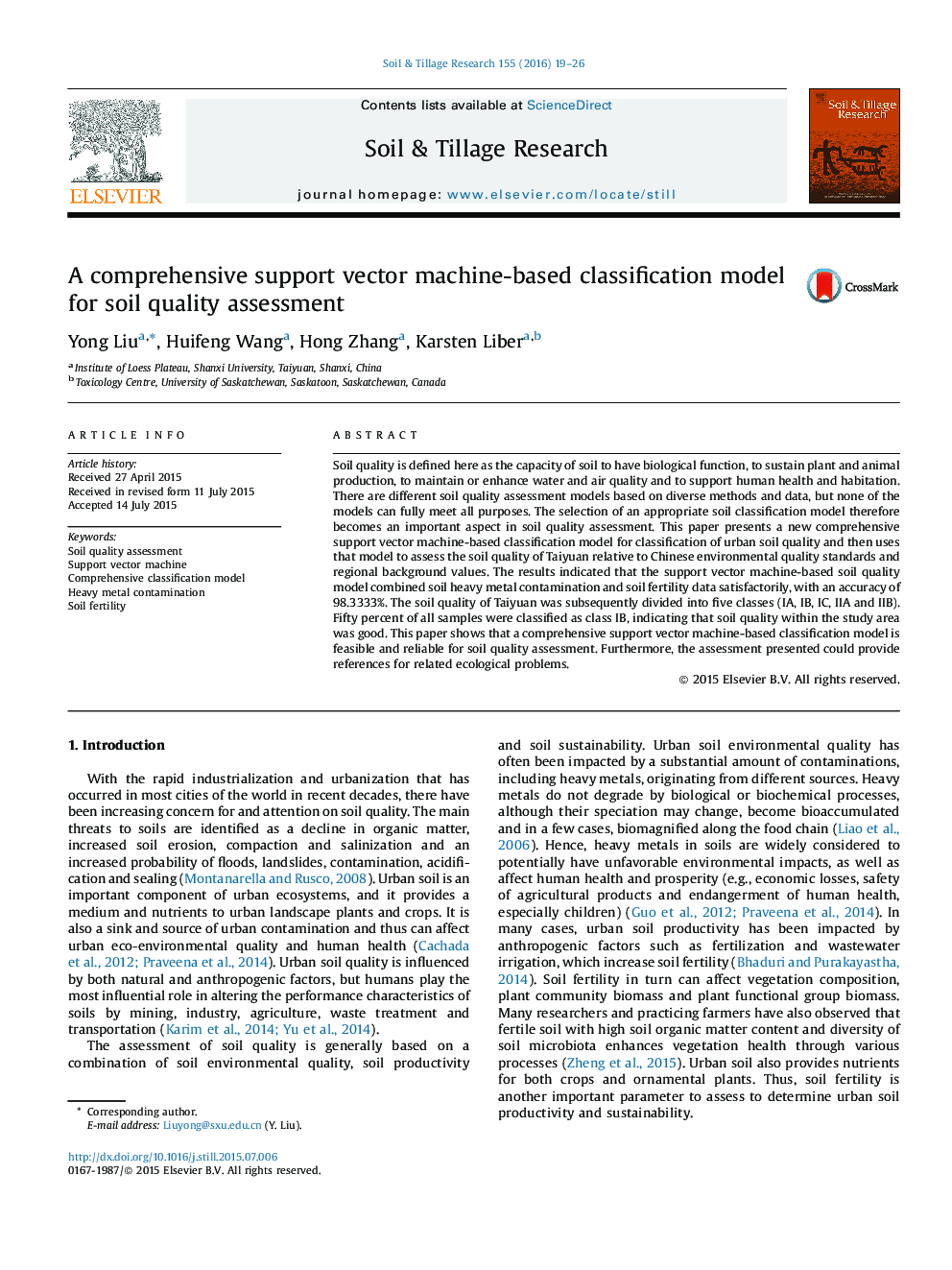| Article ID | Journal | Published Year | Pages | File Type |
|---|---|---|---|---|
| 305457 | Soil and Tillage Research | 2016 | 8 Pages |
•Traditional methods do not do well in dealing with the soil complex nonlinearity.•We propose a comprehensive model for classification of urban soil quality.•The model combined soil heavy metal contamination and soil fertility together.•The proposed method shows superior accuracy in classification.
Soil quality is defined here as the capacity of soil to have biological function, to sustain plant and animal production, to maintain or enhance water and air quality and to support human health and habitation. There are different soil quality assessment models based on diverse methods and data, but none of the models can fully meet all purposes. The selection of an appropriate soil classification model therefore becomes an important aspect in soil quality assessment. This paper presents a new comprehensive support vector machine-based classification model for classification of urban soil quality and then uses that model to assess the soil quality of Taiyuan relative to Chinese environmental quality standards and regional background values. The results indicated that the support vector machine-based soil quality model combined soil heavy metal contamination and soil fertility data satisfactorily, with an accuracy of 98.3333%. The soil quality of Taiyuan was subsequently divided into five classes (IA, IB, IC, IIA and IIB). Fifty percent of all samples were classified as class IB, indicating that soil quality within the study area was good. This paper shows that a comprehensive support vector machine-based classification model is feasible and reliable for soil quality assessment. Furthermore, the assessment presented could provide references for related ecological problems.
